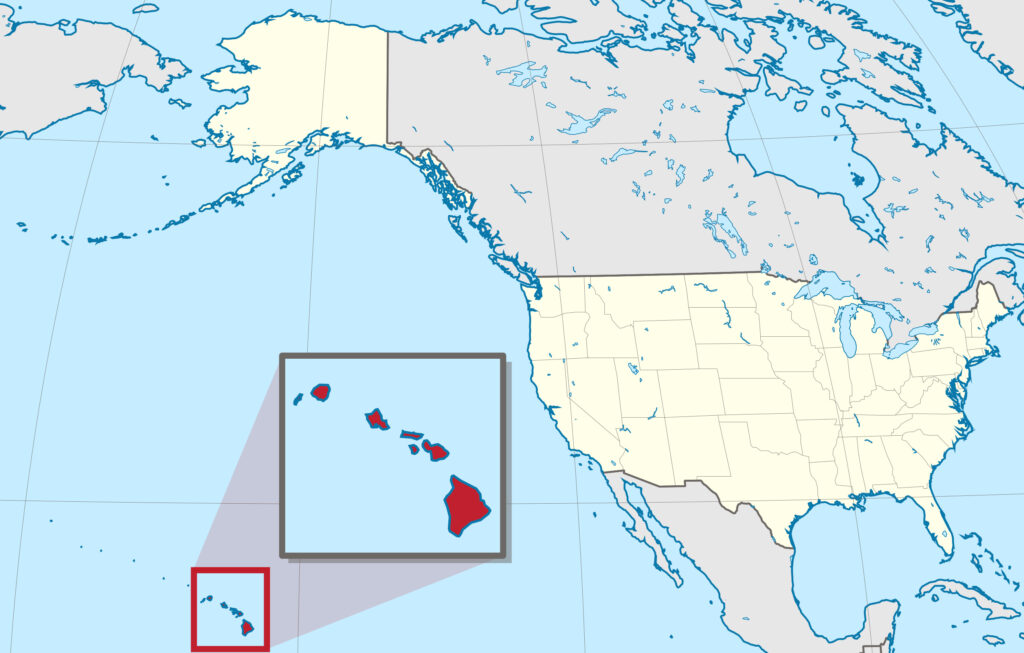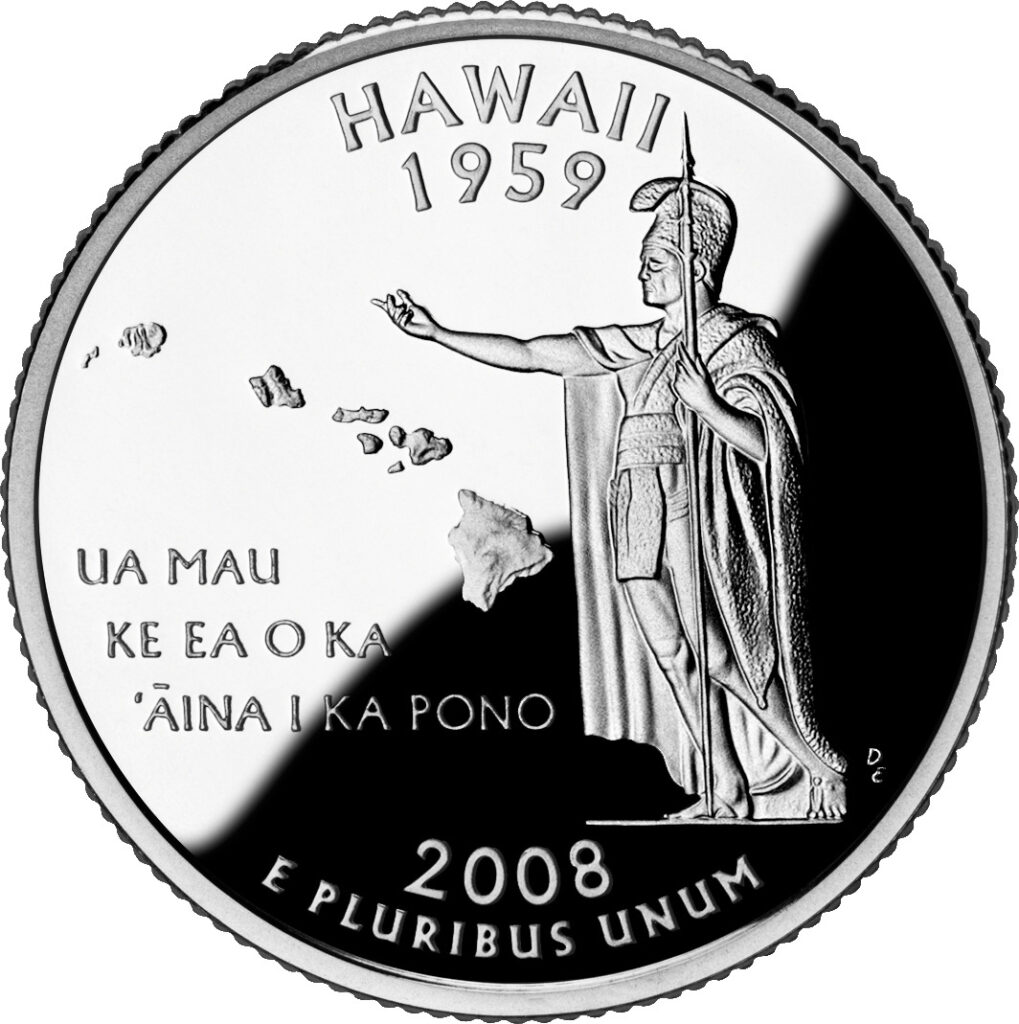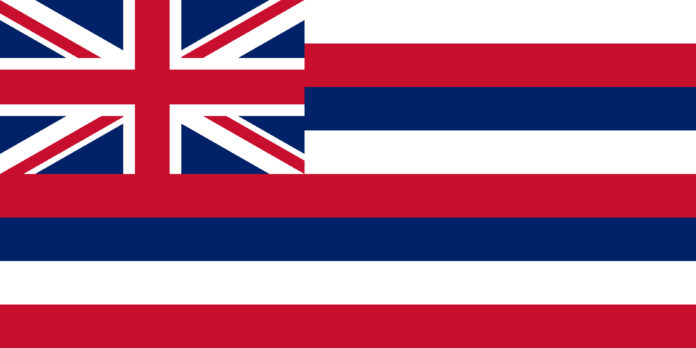Hawaii, the Aloha State, is a breathtaking chain of islands in the Pacific Ocean, known for its stunning natural landscapes, rich cultural heritage, and welcoming spirit. As the 50th state to join the United States, Hawaii offers a unique blend of traditions and modernity. From its volcanic peaks and pristine beaches to its vibrant communities and fascinating history, Hawaii is a destination that captivates both tourists and residents.
This guide explores the geography, history, culture, and attractions of Hawaii, making it an essential resource for anyone curious about this tropical paradise.
Geography and Natural Beauty
Hawaii is a volcanic archipelago consisting of eight main islands: Hawaii (commonly known as the Big Island), Maui, Oahu, Kauai, Molokai, Lanai, Niihau, and Kahoolawe. Each island boasts its own unique landscapes and attractions, offering something for every type of traveler.
The Big Island, the largest of the islands, is home to Mauna Kea, a dormant volcano, and Kilauea, one of the most active volcanoes in the world. Hawaii Volcanoes National Park on the Big Island showcases these geological marvels, offering opportunities for hiking and exploring lava fields.
Maui, often called the “Valley Isle,” is famous for its lush rainforests, scenic drives along the Road to Hana, and the sunrise at Haleakalā National Park, a dormant volcano that provides awe-inspiring views.
Oahu, home to the state capital, Honolulu, is where you’ll find iconic sites like Waikiki Beach, Pearl Harbor, and the North Shore, known for its world-class surfing.
Kauai, the “Garden Isle,” is known for its dramatic cliffs along the Nā Pali Coast, its waterfalls, and the Waimea Canyon, often referred to as the “Grand Canyon of the Pacific.”
Hawaii’s climate is tropical, with warm temperatures and consistent trade winds. Rainfall varies by region, creating microclimates that range from arid deserts to lush rainforests. This diversity makes Hawaii an ecological treasure trove.
A Rich and Complex History
Hawaii’s history begins with its first settlers, Polynesians who arrived in canoes over 1,500 years ago. They brought with them their culture, language, and agricultural practices, establishing a thriving society. Over time, separate kingdoms formed on each island, eventually unified in 1810 by King Kamehameha the Great.
In the late 18th century, Western explorers like Captain James Cook arrived, bringing profound changes to Hawaiian society. The introduction of Christianity, trade, and new technologies transformed the islands but also brought disease and cultural disruptions.
In 1893, the Hawaiian monarchy was overthrown, and the islands became a U.S. territory in 1898. Hawaii achieved statehood in 1959, becoming the 50th state in the United States. This history is preserved at sites like the Iolani Palace in Honolulu, the only royal palace in the United States.
Cultural Heritage
Hawaii’s culture is a rich blend of Polynesian traditions and influences from Asia, Europe, and the United States. Central to Hawaiian culture is the concept of aloha, which encompasses love, compassion, and a spirit of connection. This philosophy is reflected in the warm hospitality of the Hawaiian people.
The hula, a traditional Hawaiian dance, is a powerful expression of storytelling and spirituality, accompanied by chants or songs known as mele. The annual Merrie Monarch Festival in Hilo celebrates this art form and showcases its significance in Hawaiian culture.
Hawaiian cuisine is another window into the state’s culture. Traditional dishes like poi (made from taro root), kalua pork, and poke are staples of island life. Fusion cuisine, blending Hawaiian flavors with Asian and Western influences, is also popular, with dishes like loco moco and plate lunches widely enjoyed.
Tourist Attractions and Activities
Hawaii offers a wealth of attractions and activities that draw millions of visitors each year. Here are some highlights:
- Pearl Harbor National Memorial: Located on Oahu, this historic site commemorates the 1941 attack that led to the United States’ entry into World War II. Visitors can explore the USS Arizona Memorial and learn about this pivotal moment in history.
- Haleakalā National Park: On Maui, this park is known for its otherworldly volcanic landscapes and the stunning sunrise views from the summit.
- Waikiki Beach: A world-famous destination on Oahu, offering pristine sands, surfing, and vibrant nightlife.
- Nā Pali Coast: Accessible by boat, helicopter, or hiking, this coastline on Kauai features dramatic cliffs, waterfalls, and secluded beaches.
- Hawaii Volcanoes National Park: Home to Kilauea and Mauna Loa, this park on the Big Island offers a glimpse into the geological forces that shaped the islands.
Outdoor enthusiasts can also enjoy snorkeling in Hanauma Bay, whale watching off Maui’s coast, and hiking trails across the islands. Water sports like surfing, paddleboarding, and kayaking are integral to Hawaii’s active lifestyle.
The Economy of Hawaii
Hawaii’s economy is largely driven by tourism, which accounts for a significant portion of the state’s revenue. Visitors from around the world come to experience the islands’ natural beauty, unique culture, and luxury resorts.
Agriculture also plays a key role, with Hawaii producing coffee, macadamia nuts, and tropical fruits like pineapples and papayas. The state’s Kona coffee is particularly renowned for its quality and flavor.
Military spending is another major contributor, with several key installations on Oahu, including Joint Base Pearl Harbor-Hickam. Hawaii’s strategic location in the Pacific makes it an essential hub for defense operations.
Environmental Conservation
Hawaii’s fragile ecosystems face numerous challenges, including invasive species, habitat loss, and climate change. Rising sea levels and coral bleaching are particularly concerning for the state’s coastal areas and marine life.
Efforts to preserve Hawaii’s natural beauty include initiatives to protect endangered species, restore native forests, and promote sustainable tourism. Organizations like the Hawaii Conservation Alliance work to address these issues and raise awareness about the importance of conservation.
Festivals and Events
Hawaii’s calendar is filled with festivals and events that celebrate its culture and community spirit. The Aloha Festivals, held annually across the islands, showcase Hawaiian music, dance, and traditions. The Ironman World Championship on the Big Island attracts athletes from around the globe, while the Maui Film Festival offers a unique blend of cinema and island charm.
Cultural events like the Lantern Floating Ceremony on Memorial Day provide moments of reflection and connection, honoring loved ones who have passed. These festivals highlight Hawaii’s vibrant community and its dedication to preserving its heritage.
Educational Opportunities
Hawaii is home to several notable educational institutions, including the University of Hawaii system, which has campuses across the islands. The university is known for its research in marine biology, astronomy, and Hawaiian studies. Institutions like Chaminade University and Hawaii Pacific University also contribute to the state’s academic landscape.
Educational programs focused on Hawaiian culture and history ensure that the islands’ traditions are passed down to future generations, preserving their unique identity.
Hawaii’s Global Significance
Hawaii’s strategic location in the Pacific has made it a global crossroads for centuries. Today, the state serves as a bridge between East and West, fostering connections in trade, tourism, and cultural exchange. Its role in global diplomacy and its unique position as a center for research in oceanography, volcanology, and climate science underscore its importance on the world stage.
Hawaii is more than just a tropical paradise—it’s a vibrant state with a rich history, diverse culture, and breathtaking landscapes. From the volcanic peaks of the Big Island to the golden sands of Waikiki, Hawaii offers experiences that captivate and inspire. Its unique blend of natural beauty, cultural heritage, and modern amenities make it a destination like no other.
Whether you’re exploring the islands as a visitor or calling Hawaii home, the Aloha State leaves a lasting impression, embodying the spirit of connection and harmony that defines its people. For those seeking adventure, relaxation, or cultural enrichment, Hawaii truly has it all.




